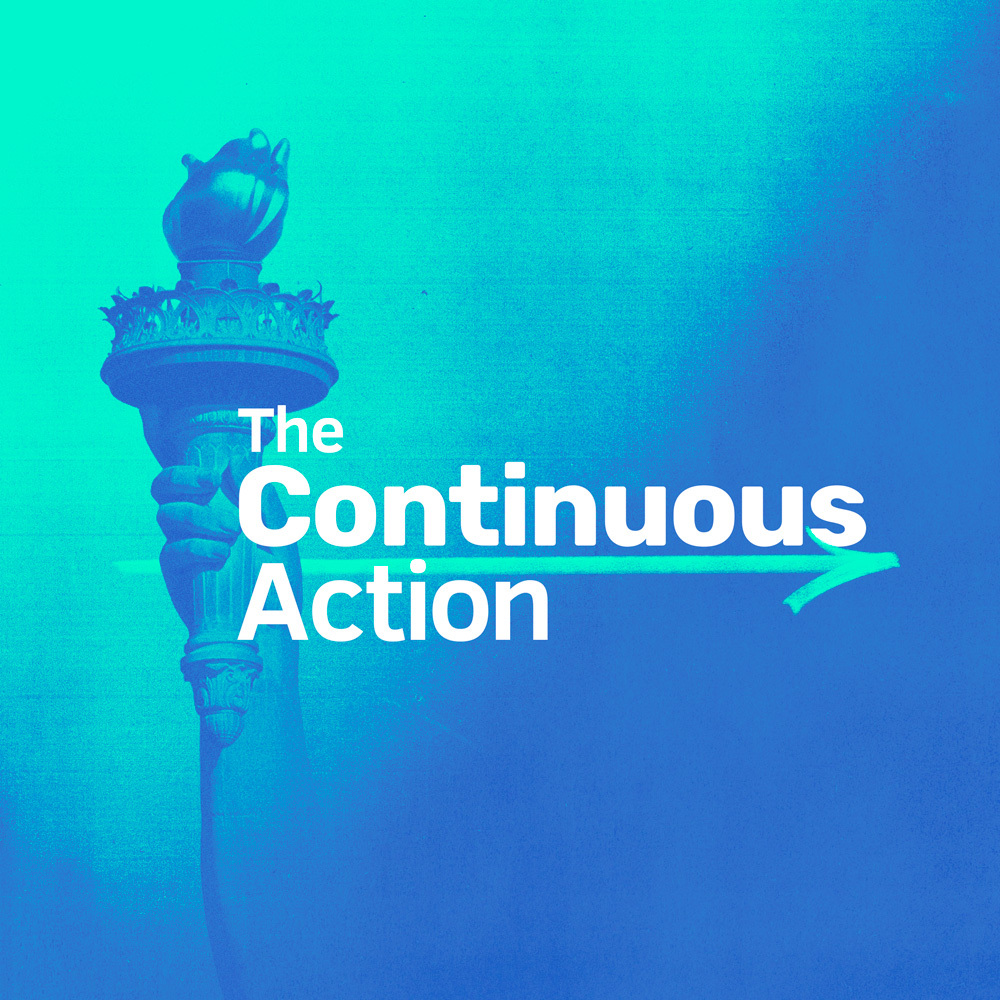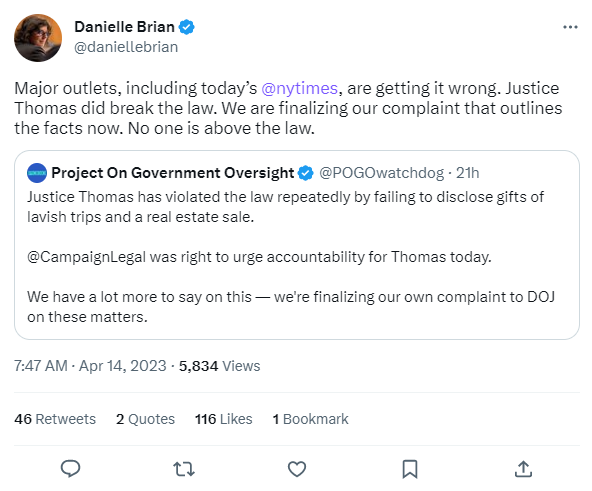
15 April 23
Live on the homepage now!
Reader Supported News
RSN STRUGGLING FOR SURVIVAL, WHY ON EARTH? — How do we come to a point where this organization has no money to operate? Yes this is a very real funding crisis. Right here, right now. We are battling for the basic resources we need to keep publishing. Our opponent, our adversary is apathy. We do great things with the resources we are given. Let’s get active here, please.
Marc Ash • Founder, Reader Supported News
Sure, I'll make a donation!

Clarence Thomas' Family Got $133K From Nazi-Obsessed Billionaire
Nikki McCann Ramirez, Rolling Stone
Ramirez writes: "Justice Clarence Thomas and his family sold $133,000 worth of real estate properties to conservative billionaire (and collector of Nazi memorabilia) Harlan Crow - without disclosing the transaction as required by federal ethics laws."

15 April 23
Live on the homepage now!
Reader Supported News
RSN STRUGGLING FOR SURVIVAL, WHY ON EARTH? — How do we come to a point where this organization has no money to operate? Yes this is a very real funding crisis. Right here, right now. We are battling for the basic resources we need to keep publishing. Our opponent, our adversary is apathy. We do great things with the resources we are given. Let’s get active here, please.
Marc Ash • Founder, Reader Supported News
Sure, I'll make a donation!

Clarence Thomas' Family Got $133K From Nazi-Obsessed Billionaire
Nikki McCann Ramirez, Rolling Stone
Ramirez writes: "Justice Clarence Thomas and his family sold $133,000 worth of real estate properties to conservative billionaire (and collector of Nazi memorabilia) Harlan Crow - without disclosing the transaction as required by federal ethics laws."
In addition to the private jet trips and luxury vacations, Thomas omitted a six-figure real estate deal with Harlan Crow from his financial disclosures
Supreme Court Justice Clarence Thomas and his family sold $133,000 worth of real estate properties to conservative billionaire (and collector of Nazi memorabilia) Harlan Crow — without disclosing the transaction as required by federal ethics laws, according to ProPublica. The report published Thursday expands on previous reporting linking Thomas to a string of expensive, unreported gifts from Crow.
According to the report, Crow purchased a house and two lots owned by Thomas, his mother, and relatives of his deceased brother in 2014. Crow would go on to spend tens of thousands of dollars on renovations to the home while Thomas’ mother continued to live in it.
In his financial disclosure forms from the year of the purchase, Thomas left blank a section for reporting the identities of parties involved in private transactions with the justice. Experts say the omission could constitute a direct violation of ethics laws, as disclosure is required for real estate sales or purchases over $1,000.
ProPublica previously reported on Thomas’ friendship with Crow. The billionaire treated the Supreme Court justice to rides on his private jet, luxury resort vacations, and yachting trips on a virtually yearly basis. The pair are so close that there’s even a painting of Thomas and Crow smoking cigars displayed at Crow’s 100-acre invitation-only resort in the Adirondacks. The gifts were never disclosed.
Thomas responded with incredulity as to why anyone would think one of the most powerful figures in government accepting boatloads of fancy perks from a conservative megadonor would be a problem. “Harlan and Kathy Crow are among our dearest friends, and we have been friends for over twenty-five years. As friends do, we have joined them on a number of family trips during the more than quarter century we have known them,” he said in a statement.
This is not Thomas’ first brush with ethics controversies. The Supreme Court justice has been involved in several key rulings regarding investigations into former President Trump’s actions in the aftermath of the 2020 election. Thomas’ wife, Ginni Thomas, was active in efforts to overturn the results of the election, even going so far as to pressure state officials to act on behalf of the former president.
As the scandal surrounding the Thomas’ connections grows, watchdogs and lawmakers have called for an official investigation. Senate Democrats wrote a letter to Chief Justice John Roberts asking him to “immediately open” a probe into Thomas, warning that Democrats would consider legislation to address the issue directly if the court did not move for accountability.
READ MORE
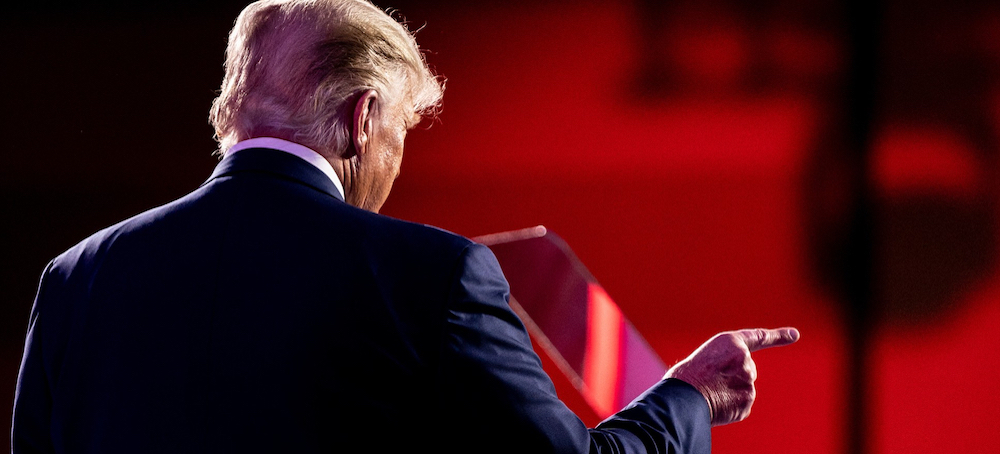 Donald Trump. (photo: Erin Schaff/NYT/Redux)
Donald Trump. (photo: Erin Schaff/NYT/Redux)
Six Takeaways From Trump's New Financial Disclosure
Michael C. Bender and Eric Lipton, The New York Times
Excerpt: "Former President Donald J. Trump provided the first look at his post-presidency business dealings on Friday with a new personal financial disclosure."
In a 101-page filing, Donald J. Trump revealed lower-than-expected values on his social media company and sizable bank loans.
Former President Donald J. Trump provided the first look at his post-presidency business dealings on Friday with a new personal financial disclosure. Though light on specifics, the documents filed with the Federal Election Commission revealed lower-than-expected values on his social media company, two additional hefty bank loans and a new income stream for former first lady Melania Trump.
The former president filed his disclosure after requesting multiple extensions. He had been warned that he would face fines if he failed to file within 30 days of a March 16 deadline.
The financial disclosure shows cumulative income from January 2021 to Dec. 15, 2022, as required by the Federal Election Commission, and the value of assets as of December 2022, according to a person familiar with the documents.
Here are six takeaways from the 101-page filing.
Trump’s social media company takes a valuation hit
The disclosure valued the parent company of Truth Social, the former president’s social media platform and personal megaphone, at between $5 million and $25 million. That reported value for the parent company, Trump Media & Technology Group, was considerably less than the potential $9 billion valuation for the company when it announced a merger in October 2021 with a cash-rich special purpose acquisition company called Digital World Acquisition Company.
The estimate reflected the current value for Mr. Trump’s holding and was not an attempt to price the assets after a potential estimate, a person familiar with the filing said. Still, the intrinsic value of Trump Media is considerably less than he had hoped for when he launched the company in early 2021.
The merger deal has been held up by dual investigations by federal prosecutors and securities regulators, causing the stock of Digital World to tumble from a high of $97 a share to its current price of $13.10 a share. Still, if the deal is ever completed, it will bring at least $300 million in badly needed cash to Trump Media and potentially increase Mr. Trump’s paper wealth by a considerable amount. And Mr. Trump stands to get 70 million shares.
The deadline for Trump Media and Digital World to complete the merger is early September. The Securities and Exchange Commission, which is investigating events surrounding the proposed merger along with federal prosecutors, has yet to sign off on the deal.
A spokeswoman for Trump Media said the company remained convinced it was going to reach “billions of dollars in value.”
The filing also showed that Mr. Trump, who is listed as chairman of Trump Media, owns 90 percent of the company. The filing does not identify the owners of the other 10 percent of the company. The company’s chief executive is Devin Nunes, the former Republican congressman from California.
Trump’s online trading cards show underwhelming early sales
Late last year, Mr. Trump announced a foray into digital assets known as NFTs, or nonfungible tokens. Trump Cards, virtual trading cards illustrated with a variety of cartoonish images of the former president, first went up for sale on Dec. 15.
Expectations for the deal — orchestrated by Bill Zanker, a serial entrepreneur who had previously co-authored a book with Mr. Trump and paid him millions of dollars in speaking fees — were high: NFTs had commanded stunning prices in recent years, with one single token topping $22 million in early 2022.
Privately, Mr. Trump had been assured the venture could hit as much as $100 million in sales, but early returns suggested a less spectacular outcome, with analysts estimating less than $6 million in total revenue by early February.
Mr. Trump’s new financial disclosure states that the company he created for the NFT project, CIC Digital LLC, had between $100,001 and $1 million in income. But because the filing cuts off on Dec. 15 — the exact day that Trump Cards began trading — it was unclear how much of the early sales of the NFTs was included.
Public data on cryptocurrency trading shows that 44,000 of the Trump Cards were sold, at $99 apiece, in the first 24 hours of trading. In addition, numerous cards were sold on the secondary market on Dec. 15, each of which would net a royalty of 10 percent under terms of the offering.
Mr. Zanker has declined requests to comment on how sales of the Trump Cards are split or what overhead costs might be. But the report does provide one clue about the deal from Mr. Trump’s perspective. It lists the overall value of CIC Digital at between $500,000 and $1 million — suggesting that the NFT venture may not represent the vast windfall it was supposed to be.
One executive said the income listed in the financial report did not reflect much of the money Mr. Trump has made in NFT sales. Overall, several million dollars of Trump NFTs have been sold, the executive said, with the bulk of the gross sales going to Mr. Trump under terms of the deal.
Separately, the report showed Mr. Trump earned “over $5 million” through CIC Ventures Inc., an unconnected but similarly named company formed in 2021. (“CIC” stands for commander in chief.) That income was described as being for speaking engagements, which most likely included the campaign-style events he held before becoming an official candidate in November.
Trump paid off certain loans, but took out others
Since leaving office, Mr. Trump has paid off six outstanding loans, including ones valued at more than $50 million on Trump Tower in New York and Trump Doral, a golf club outside Miami that has been his family company’s single-biggest revenue-generating property.
He also took out new loans, both from Axos Bank and totaling more than $50 million each, on the Trump Tower and Doral properties.
He also paid off a loan valued at more than $50 million on Trump Old Post Office, the Washington hotel he sold last year. Most of the loans he had received from Deutsche Bank, which once totaled more than $295 million, have now been paid off, leaving only about $45 million still owed to the bank, which was once a major lender to Mr. Trump.
In total, Mr. Trump listed more than $200 million in debts.
Trump saw new income from a deal with a Saudi-based firm
The financial disclosure shows the first payments to Mr. Trump for a new deal backed by a Saudi Arabia-based real estate investment firm to build a new golf and hotel complex in Oman. The payments so far are listed simply as worth more than $5 million.
The project is slated to be built in Muscat, Oman, on a hillside adjacent to the Gulf of Oman, and will include a golf resort, villas and two hotels, a company executive said.
The Trump family is teaming up with Dar Al Arkan, one of Saudi Arabia’s largest real estate companies, for the project. The government of Oman owns the land, meaning Mr. Trump is now essentially in a business deal with the government there.
Melania Trump reports a fresh revenue stream
The former first lady incorporated one company, MKT World LLC, in 2021, using the same address as Trump International Golf Club, according to Florida Department of State records. The company reported earning royalties of between $1 million and $5 million.
While the company’s exact business dealings were unclear, Ms. Trump has found multiple ways to monetize her ties to Mr. Trump since leaving the White House. In January 2022, she put up for auction a digital portrait of herself by a French artist, a print of the portrait and a white hat she once wore at the White House while meeting the president of France.
She also joined the conservative social-media site Parler, which announced a deal with Ms. Trump whose financial terms were not disclosed. In a statement, she said she would provide the site exclusive content “to inspire others” and promote a series of future online auctions of “collectibles” like the hat she wore at the White House.
Trump revealed fewer details this time
Mr. Trump’s financial disclosures were closely tracked during his first White House run and his presidency. The filings provided notable insights about the effect that holding office had on his wealth. And while much of his income and assets were reported only in wide ranges, Mr. Trump had previously reported specific amounts of income from certain properties.
That all changed in his latest filing.
This time, all of Mr. Trump’s income was reported in broad ranges — which is all that the federal law requires.
For example, Mr. Trump reported that revenue from Mar-a-Lago, his South Florida resort, totaled $24.2 million in 2020, an increase of 13 percent from the previous year. In his latest report, he reported that the resort earned “over $5 million” — the highest disclosure in the filing, which ultimately makes it difficult for voters to get a clear picture of his finances.
The disclosure shows a much more extensive list of individual stock and bond holdings by Mr. Trump, through various investment accounts, totaling several hundred million dollars in additional funds invested, based on the value ranges provided. The filing lists holdings in hundreds of stocks and bonds, including oil and gas, electric utilities, banks, health care, pharmaceutical companies, military contractors and many other sectors.
This reflects, in part, new income Mr. Trump earned through the sale last year of the Trump International Hotel in Washington and the refinancing of mortgages on two valuable office buildings controlled by Vornado Realty Trust that Mr. Trump owns a stake in, one in Manhattan and the other in San Francisco. When these loans were refinanced, it resulted in a large payout to the Trump family.
Eric Trump, who helps run the family company, said in a statement Friday that the financial disclosure reflected a diversified real estate and media company that is relatively healthy. “We have tremendous cash, maintain incredibly low debt relative to the value of our assets,” he said in a statement.
He did not address the various legal challenges and investigations the family is facing.
READ MORE
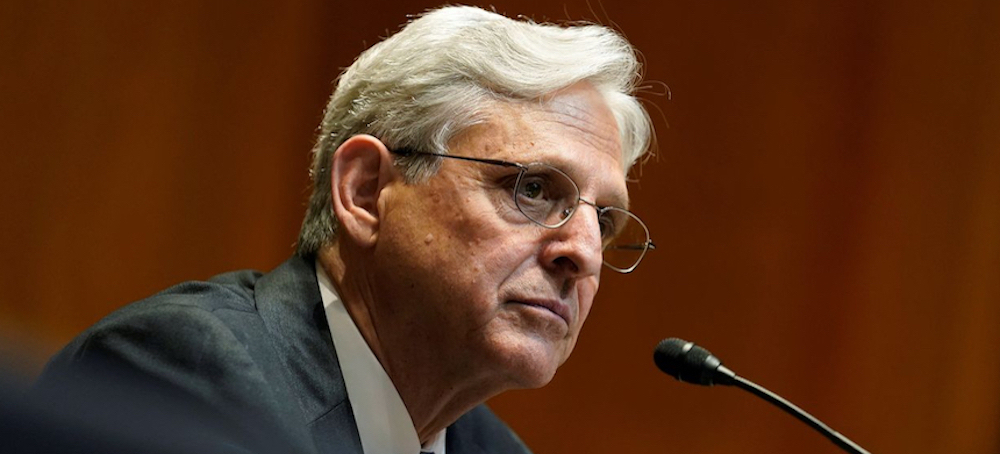 Attorney General Merrick Garland. (photo: Susan Walsh)
Attorney General Merrick Garland. (photo: Susan Walsh)
Mexico: US Charges 28 Members of Sinaloa Cartel Including El Chapo's Sons
Associated Press
Excerpt: "The US justice department has charged 28 members of Mexico's powerful Sinaloa cartel, including sons of notorious drug lord Joaquín 'El Chapo' Guzmán, in a sprawling fentanyl-trafficking investigation."
Charges filed against cartel leaders, alleged chemical suppliers, lab managers, traffickers and others in fentanyl investigation
The US justice department has charged 28 members of Mexico’s powerful Sinaloa cartel, including sons of notorious drug lord Joaquín “El Chapo” Guzmán, in a sprawling fentanyl-trafficking investigation.
The attorney general, Merrick Garland, announced the charges on Friday alongside the Drug Enforcement Administration (DEA) chief, Anne Milgram, and other top federal prosecutors. The charges were filed against cartel leaders, as well alleged chemical suppliers, lab managers, fentanyl traffickers, security leaders, financiers and weapons traffickers.
The indictments announced on Friday charge three of Guzmán’s sons – Ovidio Guzmán López, Jesús Alfredo Guzmán Salazar and Iván Archivaldo Guzmán Salazar – who are known as the Chapitos, or little Chapos, and who have earned a reputation as the more violent and aggressive faction of the cartel.
Only Guzmán López is in custody, in Mexico.
The indictments also charge Chinese and Guatemalan citizens accused of supplying precursor chemicals required to make fentanyl. Others charged in the cases include those accused of running drug labs and providing security and weapons for the drug trafficking operation, prosecutors said.
Nearly 107,000 Americans died of drug overdoses in the US in 2021. The Drug Enforcement Administration says most the fentanyl trafficked in the United States comes from the Sinaloa cartel.
The Sinaloa cartel’s notorious drug lord was convicted in 2019 of running an industrial-scale smuggling operation. At his trial, prosecutors said evidence gathered since the late 1980s showed he and his murderous cartel made billions of dollars by smuggling tons of cocaine, heroin, meth and marijuana into the US.
In outlining the charges, Garland described the violence of the Sinaloa cartel, describing how its members have tortured perceived enemies, including Mexican law enforcement officials. In some cases, cartel members have also fed victims, some still alive, to tigers owned by Guzmán’s sons, Garland said.
Eight of those charged in Friday’s case have been arrested and remain in custody of law enforcement officials outside of the US. The US government is offering rewards for several others charged in the case.
Ovidio Guzmán López, one of Guzmán’s sons, was arrested in January in the Sinaloa capital of Culiacán, by the Mexican army and national guard.
Ovidio Guzmán, nicknamed “the Mouse”, had not been one of El Chapo’s better-known sons until an aborted operation to capture him three years earlier. He was briefly detained in 2019, but authorities released him on the orders of President Andrés Manuel López Obrador after cartel gunmen unleashed a wave of violence.
After Guzmán’s rearrest, the cartel launched a similar wave of retaliatory attacks, shutting down the city’s airport, but failing to prevent authorities from taking him from the city. About 30 people died in the violence.
The US government is currently awaiting the younger Guzmán’s extradition.
Ovidio Guzmán López and his brother Joaquín Guzmán López allegedly helped moved the Sinaloa cartel hard into methamphetamines, producing prodigious quantities in large labs. They were previously indicted in 2018 in Washington on drug trafficking charges.
The other two sons Jesús Alfredo Guzmán Salazar and Iván Archivaldo Guzmán Sálazar, are believed to have been running cartel operations together with Ismael “El Mayo” Zambada. They were previously also charged in the US in Chicago and San Diego.
Zambada had been rumoured to be in poor health and isolated in the mountains leading the sons to try to assert a stronger role to keep the cartel together.
The DEA said it investigated the case in 10 countries: Australia, Austria, China, Colombia, Costa Rica, Greece, Guatemala, Mexico, Panama and the United States.
“Death and destruction are central to their whole operation,” Milgram said of the cartel.
READ MORE
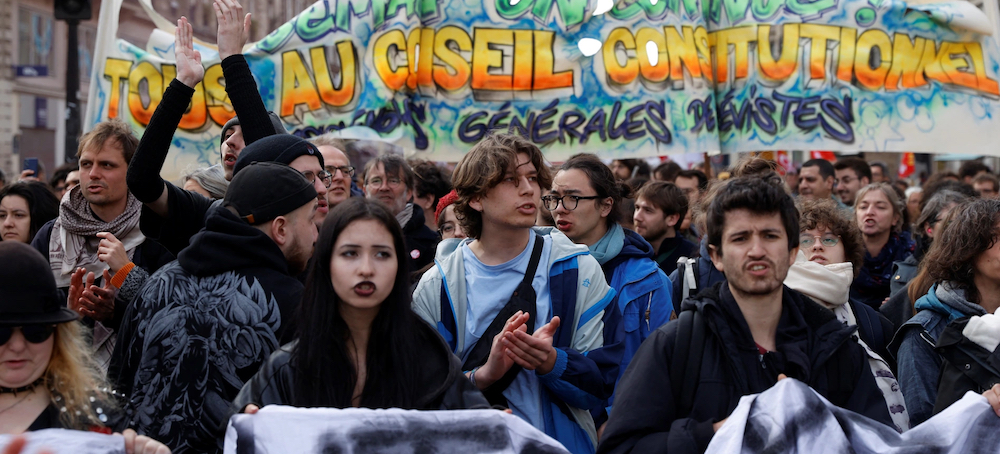 Protesters march in Paris against pension reform. (photo: Stephanie Lecocq/Reuters)
Protesters march in Paris against pension reform. (photo: Stephanie Lecocq/Reuters)
French Court Approves Macron's Plan to Raise Retirement Age, as Protests Continue
Al Jazeera
Excerpt: "France's constitutional court has approved the key elements of President Emmanuel Macron's pension reforms, triggering new nationwide protests against the plan."
Fresh protests erupt after Constitutional Council approves key provisions of French president’s pension reforms.
France’s constitutional court has approved the key elements of President Emmanuel Macron’s pension reforms, triggering new nationwide protests against the plan.
The nine-member Constitutional Council ruled on Friday in favour of key provisions, including raising the retirement age to 64 from 62, judging the legislation to be in accordance with the law.
Six minor proposals were rejected, including efforts to force large companies to publish data on how many people over 55 they employ, and a separate idea to create a special contract for older workers.
The ruling paves the way for Macron to implement the unpopular changes that have sparked months of protests and strikes.
The decision represents a victory for Macron, but analysts said it has come at a major personal cost for the 45-year-old while causing months of disruption for the country with sometimes-violent protests that have left hundreds injured.
The president’s personal ratings are close to their lowest-ever level, and many voters have been outraged by his decision to defy hostile public opinion and ram the pensions law through the lower house of parliament without a vote.
“Stay the course, that’s my motto,” Macron said on Friday as he inspected restoration efforts at the Notre Dame cathedral, four years after a devastating fire gutted the Gothic masterpiece.
Thousands of protesters gathered outside Paris city hall and booed the court decision. Some then marched through the city centre.
Protests rallying hundreds erupted in other cities, including Marseille and Toulouse and in Lyon where police used tear gas to disperse demonstrators, the AFP news agency reported.
In the western city of Rennes, protesters set fire to the entrance of a police station, while other fires were also started in the city.
“The attacks in Rennes… by thugs determined to fight it out are unacceptable,” tweeted Interior Minister Gerald Darmanin.
Al Jazeera’s Natacha Butler, reporting from Paris, said that the court decision was a big win for Macron.
“But there is no doubt that it has come with a price,” she said, reminding that France saw months of massive protests.
“Macron is facing a situation where he needs to try to rebuild trust with the trade unions, some opposition lawmakers and segments of the French society,” Butler added.
Opponents
“All the labour unions are calling on the President of the Republic to show some wisdom, listen and understand what is happening in the country and not to promulgate this law,” the leader of the CGT union Sophie Binet said.
In a joint statement, unions said this was “the only way to soothe the anger in the country.”
“The fight continues and must gather force,” the leader of the hard-left La France Insoumise party, Jean-Luc Melenchon, wrote on Twitter.
Far-right Rassemblement National figurehead Marine Le Pen added that the fate of the reform was “not sealed” despite Friday’s decision.
Last month, a strike by Paris refuse workers left the capital strewn with 10,000 tonnes of uncollected rubbish, while train services, oil refineries and schools have been affected by regular stoppages since January.
Some 380,000 people took to the streets nationwide on Thursday in the latest day of union-led action, according to the interior ministry.
But that was a fraction of the nearly 1.3 million who demonstrated at the height of the protests in March.
In a second decision on Friday, the court rejected a bid from opposition legislators to force a referendum on an alternative pension law that would have kept the retirement age at 62.
France currently lags behind most of its European neighbours, many of which have hiked the retirement age to 65 or above.
‘Sustainable’ model
Opponents of the law have said it is unfair to unskilled workers who started working early in life, while critics also said it undercut the right of workers to a long retirement.
The average life expectancy in France is 82.
Macron has repeatedly called the change “necessary” to avoid annual pension deficits forecast to hit 13.5 billion euros ($14.8bn) by 2030, according to government figures.
“I’m proud of the French social model, and I defend it, but if we want to make it sustainable we have to produce more,” he said on Wednesday during a trip to the Netherlands.
“We have to re-industrialise the country. We have to decrease unemployment and we have to increase the quantity of work being delivered in the country. This pension reform is part of it.”
READ MORE
 Tulsa's Greenwood District in 1921 after a white mob razed the predominately Black community. (photo: bswise/Flickr)
Tulsa's Greenwood District in 1921 after a white mob razed the predominately Black community. (photo: bswise/Flickr)
Tulsa Race Massacre Investigators Say They've Sequenced DNA From 6 Possible Victims
Scott Neuman, NPR
Neuman writes: "A team of researchers hoping to identify victims of the 1921 Tulsa Race Massacre said Wednesday they had completed DNA sequencing of six sets of human remains exhumed from the city's Oaklawn Cemetery, where bodies of Black residents killed in the violence are thought to have been buried."
Ateam of researchers hoping to identify victims of the 1921 Tulsa Race Massacre said Wednesday they had completed DNA sequencing of six sets of human remains exhumed from the city's Oaklawn Cemetery, where bodies of Black residents killed in the violence are thought to have been buried.
Speaking at a news conference in Tulsa, Mayor G.T. Bynum announced what he described as a "major scientific breakthrough."
"We do not believe a match of this type has ever been achieved before in American history," the mayor said.
Bynum said 22 sets of remains had been exhumed from the cemetery so far, but that experts are not yet sure if any of them were massacre victims. However, the DNA results could allow researchers to make a match with possible living relatives.
The 1921 Tulsa massacre left upward of 300 African Americans dead and resulted in the destruction of "Black Wall Street" in the city's prosperous Greenwood enclave. Although the history of the two days of violence that began on May 31, 1921, was long unknown outside the city, in recent years Tulsa has engaged in a reckoning over the events. In 2020, the city began excavating at the Oaklawn Cemetery in hopes of locating and identifying remains of victims.
"There isn't a single genealogical investigation of this magnitude in the United States that has gotten this far, and yet, we are still in the beginning stages of this process," Bynum said. "There is a lot more investigative work that is happening, and with the public's help, we are eager to enter the next phase of this process."
For the six sets of remains that were examined, the research team has identified surnames of interest for potential relatives in Oklahoma, Alabama, Georgia, Mississippi, Louisiana and Texas. If a member of the public sees their surname flagged and has a family history in Tulsa, they are being asked to contact the team at Tulsa1921DNA.org.
Alison Wilde, the genealogy case manager for the 1921 Tulsa Project, says anyone who shares the surnames in question and lives in or has historical ties to the designated areas may be able to help. They can upload their own DNA tests to GEDmatch or FamilyTreeDNA so researchers can examine them for a possible match.
"You may have taken a test at ancestry.com or 23andMe or MyHeritage," she said, referring to popular DNA testing and genealogy websites. "[But] if you want your DNA compared to the unidentified human remains in this project then those tests need to be uploaded or transferred."
Using the DNA information from the public, the team hopes to draw up a list of possible matches.
"How easy or how challenging the identification is going to be depends on the people on that list," Wilde said.
It would be easiest if the team can discover a "direct descendant who will share an obvious and significant amount of DNA." But it's also possible that the list would be "comprised of very, very distant DNA relatives — so distant in time that we may never be able to tie them together," she said.
Danny Hellwig, the director of laboratory development for Intermountain Forensics, the Salt Lake City-based lab that sequenced the DNA, vowed that Intermountain and the rest of the team "will continue to leave no stone unturned in this investigation for truth and justice."
"This is just the beginning of what we hope will be a long and and fulfilled process of investigating these results, using the most cutting-edge DNA technologies available," Hellwig said.
In November, the Tulsa World newspaper reported that a total of 66 burials had been unearthed at the Oaklawn Cemetery, all but four of which were unmarked. It is believed that many victims of the massacre were buried in unmarked graves, but their locations were never recorded.
READ MORE
 A vigilante on the U.S.-Mexico border. (photo: Jose Luis Gonzalez/Reuters)
A vigilante on the U.S.-Mexico border. (photo: Jose Luis Gonzalez/Reuters)
Hundreds Turn Out to Denounce Texas Republicans' "Vigilante Death Squads Policy"
Ryan Devereaux, The Intercept
Devereaux writes: "Hundreds of Texans converged on the capital this week to oppose a new state-led security force that would enlist civilians to track and capture undocumented people."
Residents blasted Rep. Matt Schaefer’s controversial bill in a hearing that stretched late into the night.
Hundreds of Texans converged on the capital this week to oppose a new state-led security force that would enlist civilians to track and capture undocumented people.
In a hearing that stretched into the wee hours of the morning Wednesday, the Texas House of Representatives heard testimony from first-generation college students, undocumented activists, parents, and children about the inherent dangers of House Bill 20. The author of the controversial proposal, Republican Rep. Matt Schaefer, meanwhile, was grilled by his Democratic counterparts over his bill’s logical and constitutional implications.
In his most extensive public defense of his bill to date, Schaefer, the founder and chair of the arch-conservative Texas Freedom Caucus, collapsed the issues of fentanyl overdoses and migration, ignoring facts and evidence to argue that migrants are responsible for a wave of death and suffering that exceeds the worst episodes of national trauma in modern American history. Pointing to national overdose statistics, he described “a scale of death far greater than Pearl Harbor, the attacks on 9/11, or the totality of the Vietnam War.”
“So much fentanyl is coming across the border, it’s unreal,” the Texas lawmaker said before proceeding to conflate and misrepresent several issues regarding migration and drugs.
As federal officials, border researchers, and journalists have documented ad nauseam, most fentanyl illegally trafficked into the United States comes through U.S. ports of entry, often in vehicles driven by U.S. citizens; according to U.S. Sentencing Commission data cited in Wednesday’s hearing, 86 percent of defendants convicted of smuggling fentanyl through ports of entry are U.S. citizens.
Migrants, on the other hand, overwhelmingly cross the border between ports of entry, thanks to successive bipartisan policies that have made admission at the ports — including pursuit of asylum claims — all but impossible. Customs officers who work the ports where most of the drugs are crossing are distinct from the Border Patrol agents who work between them, undermining a central argument Schaefer made that Mexican organized crime uses migrants to pull away U.S. officials who would otherwise be intercepting drug flows.
“Many of them are coming here just for a better life and make wonderful neighbors,” Schaefer said of the migrants themselves, but “some of them are criminals — rapists, gang members, MS-13.” To address the threat, Schaefer has proposed the “Border Protection Unit,” a new security force composed of law enforcement personnel and private individuals alike, answering directly to the governor in a mission to “arrest, detain, and deter individuals crossing the border.”
Schaefer’s bill, which Texas Democrats have dubbed the “vigilante death squads policy,” was among a bundle of proposals lawmakers heard Wednesday that would create a parallel, state-led border and immigration enforcement apparatus in Texas.
The bills are part of an explicit GOP effort to provoke a legal fight that would ultimately overturn Arizona v. United States, a 2012 Supreme Court decision that struck down a similar set of policies in Arizona as unconstitutional. Republican thought leaders, both on the border and in Washington, believe that the current conservation composition of the court is inclined to reverse the decision.
Democratic Rep. Rafael Anchía drilled down on whether the intent of Schaefer’s bill was to undo the Supreme Court case.
“The intent of the bill is to assert the authority of the state of Texas under the United States Constitution,” Schaefer told him.
“Is there a reason you’re being cagey and coy and not wanting to answer?” Anchía asked.
“I’ve answered your question,” Schaefer replied.
Rep. Chris Turner, also a Democrat, pressed Schaefer about the fundamentals of his proposal as it related to drug overdoses, asking where the majority of the fentanyl smuggled into the U.S. comes from.
“The southern border,” Schaefer said.
“Where specifically?” Turner asked.
“I think there’s some debate about that, Representative,” Schaefer replied. “I think you’re going to hear some say that most of it comes through the ports of entry.” Others, he added, without specifying who, will say “a lot of it comes through in between the ports of entry, but I think in a way it’s distinction without a difference.”
Turner noted that seizure data from Customs and Border Protection, the federal agency responsible for border security, shows that more than 90 percent of the fentanyl trafficked into the U.S. comes through the ports.
Though he used CBP’s figures concerning the apprehension of people at the border repeatedly throughout his testimony, Schaefer said he did not trust the data. At one point, the Republican lawmaker attempted to turn the tables, pressing Turner to tell him the last time he had visited the border.
“We’re gonna talk about your bill, and I’m gonna get to ask you the questions,” Turner said. “I don’t represent a border community, and last I checked, you don’t represent a border community, so we’re both talking about a region of the state that neither one of us represents, frankly.”
Schaefer’s hometown of Tyler, Texas, is more than 500 miles from the border, closer to Arkansas than Mexico.
“What I’m trying to get to is the data and the facts, and the facts indicate that we know fentanyl is a huge crisis in our country,” Turner said. “We have a lot of different strategies that we can use to deal with that. I don’t think your bill addresses fentanyl at all. That’s that’s my problem with your claims.”
Schaefer’s proposal came at the end of a grueling day of testimony involving multiple bills that would effectively institutionalize Operation Lone Star, a $4 billion program that Republican Texas Gov. Greg Abbott authorized in 2021. The program has been riddled with scandal — including the deaths of National Guard personnel and systemic civil rights violations that have led to a Justice Department investigation — while making no discernable impact on the illicit movement of drugs or people across the border.
By midday, more than 300 people were registered to testify on Schaefer’s bill, nearly all of them in opposition. Many drove across the state to make their voices heard and did so despite the fact that Schaefer didn’t rise to defend his bill until after 9 p.m.
Across four hours of testimony, one speaker after another blasted the proposal as racist, sloppy, dangerous, and unnecessary.
Undocumented activist María Treviño recalled the “dark history” of a state-backed vigilante groups targeting Mexicans and Mexican Americans in Texas.
“This bill doubles down on these racist and illegal activities by potentially training and employing anti-immigrant hate groups,” Treviño said. “I oppose this pricey, xenophobic, and unconstitutional legislation that undermines the separation of powers of our country and believe that Texas legislators should instead prioritize the health of our residents.”
The youngest of the speakers was 9-year-old Asher Vargas, the son of a firefighter, who took the microphone late in the evening.
With Schaefer sitting behind him in the front row of the hearing room, Vargas told the lawmakers about his shifts volunteering at the local migrant shelter, folding clothes, preparing meals, and, with his dad’s help, arranging travel plans for families new to the U.S.
“I find joy in helping the migrants,” Vargas said. His grandmother came to the U.S. from Mexico in the 1980s, he explained, making his family’s life possible. “Migrants come seeking peace and better lives, just like my abuelita did,” he said. “This bill will make it harder for them, which is not very kind.”
“Do you want to be known as a hateful, unwelcoming state?” Vargas asked. “I know I don’t.”
READ MORE
 Pollution from a factory. (photo: Science Focus)
Pollution from a factory. (photo: Science Focus)
EPA Proposes Major Air Pollution Reforms to Lower Residents' Cancer Risk Near Industrial Facilities
Lisa Song, Kiah Collier and Maya Miller, ProPublica
Excerpt: "The Environmental Protection Agency proposed a series of major reforms this past week to slash toxic air pollution at chemical plants and facilities that sterilize medical equipment, nearly 18 months after ProPublica reported how an estimated 74 million Americans were exposed to elevated cancer risk from these businesses."
The EPA has proposed tougher air pollution rules for chemical plants and other industrial facilities after ProPublica found an estimated 74 million Americans near those sites faced an elevated risk of cancer.
The Environmental Protection Agency proposed a series of major reforms this past week to slash toxic air pollution at chemical plants and facilities that sterilize medical equipment, nearly 18 months after ProPublica reported how an estimated 74 million Americans were exposed to elevated cancer risk from these businesses.
The first set of rules place stricter limits on roughly 80 air pollutants, according to EPA Administrator Michael S. Regan. The list includes potent cancer-causing chemicals such as ethylene oxide, which is used to sterilize medical equipment, and chloroprene, an ingredient in synthetic rubber. The proposal, which would affect more than 200 manufacturers, requires routine air monitoring around these chemical plants, something local communities have long requested.
Regan announced the first wave of changes last Thursday at a press conference in St. John the Baptist Parish, Louisiana. The area falls within an 85-mile stretch along the Mississippi River known as “Cancer Alley” due to its concentration of industrial polluters, many of which are located near communities of color.
“For generations, our most vulnerable communities have unjustly borne the burden of breathing unsafe, polluted air,” Regan said in a statement. “Every child in this country deserves clean air to breathe, and EPA will use every available tool to make that vision a reality.”
The EPA declined to make any agency employees available for an interview.
Environmental experts said the proposal is a huge step forward. The updated rules impose stricter health standards for emissions of chloroprene and ethylene oxide to reduce the risk of cancer residents face when they breathe pollution from chemical plants. The proposal also would require facilities to fix leaks and install devices to limit emissions from smokestacks, storage tanks and other equipment. If the new rules are adopted, the number of residents near these facilities who would be exposed to unacceptable cancer risk ultimately would drop by 96%, the EPA said.
“This is a very big announcement” that targets the largest and most hazardous chemical manufacturers, said Adam Kron, an attorney at Earthjustice. The group sued the EPA years ago to force them to update these rules in a more timely manner.
Beverly Wright, executive director of the Deep South Center for Environmental Justice, said in a statement that this was “the most significant rule I have seen in my 30 years of experience working in Cancer Alley.”
The American Chemistry Council, an industry trade group, said that it was reviewing the proposed new rules but signaled it was concerned about aspects related to ethylene oxide. “Overly conservative regulations on ethylene oxide could threaten access to products ranging from electric vehicle batteries to sterilized medical equipment,” the group wrote on its website. “We support strong, science-based regulations for our industry. But we are concerned that EPA may be rushing its work on significant rulemaking packages,” it added. “We will be engaging closely throughout the comment and review process.”
In 2021, ProPublica published a unique analysis of cumulative cancer risk from industrial air pollution nationwide. Using emissions data reported by the companies, we found that in some parts of Louisiana’s Cancer Alley, the added lifetime cancer risk from these chemicals was up to 47 times what the EPA considers acceptable. Many residents who live near multiple facilities face unacceptable cancer risks from combined emissions, yet the EPA rarely considers cumulative risk. Out of all the pollutants that the EPA regulates, ProPublica's analysis found, ethylene oxide is the most toxic, contributing to the majority of the excess cancer risk created by industrial air pollution in the United States.
Our work spurred reform, including additional air monitoring, two state cancer studies and the EPA’s rejection of a less stringent health standard for ethylene oxide. Weeks after we published our series, Regan said the agency would conduct a series of unannounced EPA inspections of major polluters. The EPA’s new proposed rules, though, go even further.
The agency’s proposal also requires many facilities to conduct air monitoring and make the resulting data publicly available. On top of limiting emissions of 80 pollutants, chemical plants for the first time would monitor for six chemicals — benzene, ethylene oxide, chloroprene, vinyl chloride, ethylene dichloride and 1,3-butadiene — at the fence line, or perimeter, of their facilities. If annual averages exceeded EPA guidelines, the companies would need to find and repair any leaks that were likely to have caused the excessive emissions.
Scott Throwe, a former EPA air pollution expert who now works as a consultant, said the EPA could have gone further by requiring direct, continuous monitoring of toxic air pollutants at the vents, smokestacks and other outlets where emissions are released.
Fence line monitoring only tells you that something is leaking, he said, and doesn’t help you identify the exact piece of equipment responsible. These facilities are so large that each plant may have thousands of potential leaky spots. “They’re not going to find it in five minutes and slap some Silly Putty on the leak and call it a day,” he said. If the EPA required direct monitoring at the source, he added, it would be much easier to pinpoint the culprit.
Despite the drawbacks, fence line monitoring could give regulators a new, straightforward tool to crack down on polluters. A neoprene manufacturer in LaPlace, Louisiana, has faced years of enforcement action from state and federal agencies, yet continues to emit high levels of chloroprene. The chemical can cause liver or lung cancer. Local emissions are so high that the EPA urged state regulators to evacuate students from the nearby Fifth Ward Elementary School last fall. The students have not been moved.
The plant, owned by Denka Performance Elastomer, already has chloroprene monitors at more than 20 locations along its perimeter. The new EPA proposal would regulate chloroprene concentrations at the fence line for the first time, using 0.3 micrograms per cubic meter as a limit. When annual concentrations exceed that, companies would need to reduce their emissions.
The data around the Denka plant from January 2022 to January 2023 shows that nearly all of the monitors exceeded this new proposed threshold. Monitors close to the school showed levels up to five times the limit. Denka didn’t respond to a request for comment. In February, the U.S. Department of Justice sued the company on behalf of the EPA to compel Denka to cut chloroprene emissions. Denka has denied many of the allegations and in a counterclaim said the EPA’s conclusions about the high cancer risks posed by chloroprene are “dead wrong.”
The new EPA rules don’t just apply to facilities that make chemicals. A second EPA proposal, announced Tuesday, would require 86 facilities across the country that use ethylene oxide for sterilizing medical supplies or fumigating spices to install equipment to reduce emissions of the cancer-causing gas. The EPA estimated the rule would reduce ethylene oxide emissions from the facilities by 80%. Both EPA proposals are open for public comment and could be finalized by next year.
Tuesday’s proposal is based on the latest EPA science on ethylene oxide. In 2016, the agency concluded the chemical was 30 times more carcinogenic to people who continuously inhale it as adults and 50 times more carcinogenic for those who are exposed since birth than the agency previously thought. Industry representatives have described the EPA’s conclusion as extreme and overly protective.
The prior regulations for sterilizing facilities were based on outdated scientific studies. The agency was supposed to review the rule for possible revision in 2014 and 2022, but missed both deadlines. A coalition of environmental groups, including the Laredo, Texas-based Rio Grande International Study Center, sued the EPA in December to speed up the timeline. The lawsuit is still pending. Laredo, a border city of 250,000, has been home to the most toxic commercial sterilizer in the country, according to the 2021 ProPublica analysis.
“Today, residents of Laredo are a step closer to breathing cleaner air,” said Laredo City Council member Vanessa Perez, who co-founded the Clean Air Laredo Coalition in 2021. “It’s the EPA’s mission to ensure our air is safe to breathe. We are relying on the EPA’s ruling to move the country in the right direction for environmental protection and justice.”
Owned by Missouri-based Midwest Sterilization Corporation, the Laredo plant released far more ethylene oxide on average than any plant of its kind in the country during the five-year period covered by ProPublica’s analysis.
In a statement, Midwest Sterilization said the company “sterilizes life-saving medical devices used in everyday medical procedures and surgeries.” The company said it “has been anticipating the proposed EPA rule and working hard to make changes ahead of its release to the public.” It added: “It’s important to note that most of the changes proposed by the EPA, have already been achieved by Midwest, or are currently being implemented.”
Environmental groups celebrated the release of the long-overdue proposal but also said it should be strengthened before it is finalized. They want the EPA to require fence line monitoring of ethylene oxide at sterilizing facilities (like the agency is proposing for chemical plants) and to expand the rule to cover emissions from off-site warehouses that also are a significant source of emissions. They also called for the EPA to phase out the use of ethylene oxide.
Last year, studies published by the Texas Department of State Health Services found that rates of three types of cancer associated with ethylene oxide exposure — breast cancer, all-age acute lymphocytic leukemia and extranodal non-Hodgkin lymphoma — were “significantly greater than expected” in Laredo given the population.
The ProPublica analysis found that the Laredo facility elevates the estimated lifetime cancer risk for nearly half of the city’s residents, including 37,000 children, to a level experts say is not sufficiently protective of public health. Among them is Yaneli Ortiz, who was diagnosed with acute lymphocytic leukemia in 2019. She had just turned 13 years old. Ethylene oxide should not be ruled out as a factor in Yaneli’s diagnosis given her proximity to the facility and its history of emissions, environmental health experts said, but it is impossible to definitively say whether exposure to the chemical caused her cancer.
After Yaneli underwent years of treatment that included a harrowing near-death experience, doctors recently told her and her parents that there are no signs of cancer in her body.
Still, Yaneli is dealing with the fallout from the side effects of her treatment, particularly from the havoc that the steroids wreaked on her hips, shoulders and knees. She underwent replacement surgery for her hip and left shoulder. Recently, her right shoulder has been hurting so much that the pain keeps her awake at night. Her mother anticipates that Yaneli will need at least two more surgeries to address the injuries. Nevertheless, she recently attended prom at Driscoll Children’s Hospital in Corpus Christi, where her cancer was treated. Now 16 years old, Yaneli spent a good part of the night dancing.
“It’s, like, a little bit of a relief,” Yaneli’s mother, Karla Ortiz, said when she heard the news about the proposed EPA rules. “It’s less risky for everyone else as well, so hopefully they won’t have to go through what we went through or other families went through.”
READ MORE
Contribute to RSN
Follow us on facebook and twitter!
Update My Monthly Donation
PO Box 2043 / Citrus Heights, CA 95611






